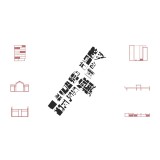The following research focuses on the spatial voids which are found in different variants on the complex urban scene. The study focuses on empty space, as a key element in the composition and conformation of the urban condition and the life in it.
To understand the concept of void, a general approach is taken initially, and then an analysis of terms and concepts that place empty space in the discussion on the city. Reference is made to the visual representations of the void in urban topography, through the Nolli maps and the ‘figure-ground’ diagrams. The concept of urban ‘porosity’ is then analyzed, but also concepts related to the empty spaces of the city such as ‘urban void, ‘in-between spaces’, and ‘terrain vague’.
Then, through a wandering in the city of Thessaloniki, the main route of Venizelos Eleftherios is chosen as the main tool of research. On this indicative path, an attempt will be made to identify and analyze the voids encountered, interrupting the continuous construction, or are located within the building blocks. These voids will be processed through walkers’ point of view, the section method, and the viewing from the height of the rooftop.
In the final stage a categorization of the voids analyzed will be performed. The categories that will be formed serve as an emphasis on their basic characteristics, but also on how they are experienced and perceived in the city.
The heterogeneity of the data generated underlines the very complexity of the city in general. It is perceived how these different voids function, and shape the existing urban condition, offering a different perspective to the perception of space and the city.
